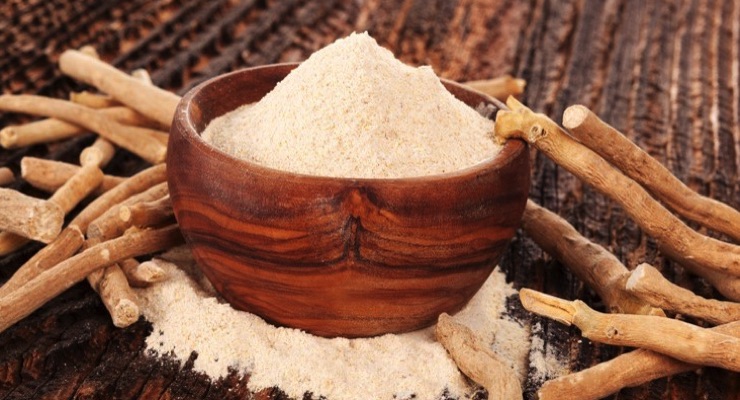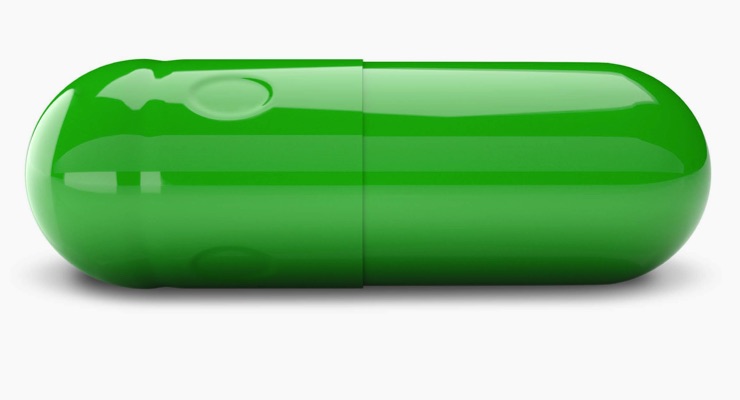Exclusives
From the Roots of Ayurvedic Medicine to Modern Nutraceuticals
Exploring innovations and formulation methods used to develop products from traditional Ayurvedic ingredients.

By: Sean Moloughney
By Anita Solanki, Lead – White Papers, Formulation R&D (Pharma and Nutra)
And Dr. Jnanadeva Bhat, Vice President, Head, Formulation R&D (Pharma and Nutra), ACG Capsules
The global nutraceuticals market is anticipated to expand at a CAGR of 7.5% between 2021 and 2026 to reach $441.7 billion by 2026. The self-care trend and increasing demand for health-promoting nutraceuticals are the major drivers of market growth. This growth in demand is expected to continue in the wake of the ongoing COVID-19 pandemic, and as a result of intensifying interest in the potential for nutraceutical ingredients to prevent diseases, as well as to boost the overall immune system.
Nutraceuticals and dietary supplements are versatile in nature and some may argue they have become a necessity of the modern world. In recent years, they moved into the mainstream, with growing awareness among consumers of the role they can play in amending and retaining physiological functions to maintain a healthy body.
Dietary supplements are aimed at a huge range of ailments, as they can contain antioxidants, anti-inflammatory agents, probiotics, fatty acids as well as various natural oils, which help in managing health issues. These include cholesterol, weight management, heart health, muscle pain, joint pain, blood sugar and sleep issues.
It may seem the development of a huge range of dietary supplements has emerged almost impossibly rapidly, but when we look more closely at nutraceutical ingredients and their properties, we can see thousands of years of history and the deep roots many of these ingredients have in our societies.
Many nutraceutical combinations have entered the global market by exploring claims made by different traditional practices. Traditional medicines have been in use across the globe for millennia, with Indian traditional medicine, Ayurveda, being among the foremost and oldest alternative medicine systems. In the past decade, interest in Ayurveda has grown worldwide. Nutraceutical manufacturers have been, and continue to be, engaged with this ancient system and developing products based off traditional Ayurvedic remedies and principles.
In this article, we will explore how innovations and current approaches are used to develop nutraceuticals from ancient Ayurvedic traditional medicines.

Ayurvedic Tradition
Ayurveda is the ancient Indian traditional medicine which has been, and is still being, investigated for its potential to prevent and manage various human diseases. Ayurveda has a plethora of information on ethnic practices, techniques, capabilities, and traditional aspects of therapeutically significant natural materials for the treatment of diseases.
There are ancient and modern books and references which describe Ayurvedic surgeries and medicines and explain how to use these ingredients to benefit the human body. It is not just about medicine, but also part of Indian cooking, which demonstrates the health advantages of incorporating certain ingredients into daily diets. Ayurveda has a parallel or separate medicinal system in India, set apart from modern pharmaceuticals and nutraceuticals, but as consumer acceptance for natural, herbal Ayurvedic ingredients grows, the production of Ayurvedic-based modern nutraceuticals is increasing.
From Ayurveda to Modern Nutraceuticals
Ayurvedic medications are traditionally used as extracts, as individual raw and crude ingredients, or a mixture of ingredients, for therapeutic purposes. In order to develop Ayurvedic medicine into a form that will be accepted and recognized as a modern dietary supplement, modifications are required.
Efficacy is a crucial parameter and thus there is a need for standardization of Ayurvedic ingredients. Standardization and quality control for the raw materials and ingredients are one of the critical criteria for their acceptance in the modern world—ensuring the consumer gets pure, safe, and efficacious supplements.
There may be variability in active constituents of naturally available ingredients from the same plant species, which may lead to differences in therapeutic activities. This can be due to a range of factors, including differing soil conditions and geography. Apart from this, suppliers and manufacturers of Ayurvedic ingredients also differ.
For example, ashwagandha can vary depending on the source, supplier, or vendor and hence standardization of its active component to guarantee the purity and potency of the product. Natural extracts can be standardized on the basis of active constituents using various chromatographic or spectroscopic techniques.
Ayurvedic medicines are rich in phytonutrients, carotenoids, phenols, polyphenols, alkaloids, and flavonoids, which impart favorable therapeutic outcomes on their own, or in combinations. To give some examples, curcumin comes from turmeric, piperine from black pepper, gingerol from ginger. When included in our diet, these can have effects such as anti-oxidizing, immunomodulatory, anti-inflammatory, and rejuvenation.
Standardization is not always as efficacious as may be required. One of the disadvantages associated with processing natural ingredients is the difficulty involved in increasing formulation efficiency and bioavailability. However, there are different ways and processes to make ingredients more bioavailable, such as increasing absorption by improving the solubility. Modern developmental techniques are obtaining better therapeutic efficacy through improved bioavailability. There are various methods available to develop products with enhanced absorption and bioavailability for consumers. These methods make Ayurvedic medicines more efficacious. Some techniques available are:
Liposome formation: Active ingredients are delivered sealed in a spherical vesicle form through Liposomal Powder Technology.
Micronization: Micronisation is reducing the particle size of the active ingredients. This can increase the solubility, which in turn can enhance the absorption of the active compound.
Nanotechnology: Nanotechnology is very popular in terms of enhancing absorption, solubility and bioavailability of poorly soluble actives by developing nanosuspension or nanoemulsions.
Amorphous solid products: These have lately received a lot of interest as one of the solutions to increase the solubility and bioavailability of poorly soluble ingredients. Curcumin is one of the ingredients being developed as amorphous solid dispersions.
Synergistic formulation: Utilizing the synergistic effects of ingredients to increase bioavailability is a widely used technique. For example, piperine increases the bioavailability of curcumin if they are consumed together. Curcumin is otherwise not easily absorbed into the body.

Role of capsules
Capsules are one of the most widely used dosage forms in the dietary supplement segment. Two-piece hard capsules can encapsulate a wide variety of ingredients due to their versatility and flexibility. Capsules are facilitating the development of modern nutraceuticals, as well as helping preserve the integrity of traditional medicines.
For example, naturally available ingredients can be directly filled into capsules with minimal excipients and processing steps. There are capsules for the encapsulation of powders and pellets, as well as liquids (which are designed with a special locking mechanism). Pure and natural oils, such virgin coconut oil, black seed oil, neem oil, peppermint oil, and other essential oils can be directly incorporated into capsules without the need for conversion to powder, or the inclusion of other additives.
Pelletization
Ayurvedic ingredients can be converted into small spherical pellets using various techniques, such as spray drying or coating methods. Pelletization gives better flow property, enhances dose accuracy, gives targeted or sustained release profiles, and reduces interaction between actives. Ashwagandha pellets, ginger pellets, curcumin pellets, lycopene pellets, piperine pellets are some examples of Ayurvedic ingredients being converted into pellets. These pellets can then be encapsulated in hard capsules as a delivery system.
From Tradition to Trend
With advancements in scientific methods, Ayurvedic medicines are steadily finding their place across the globe, with effective use as supplements. There are also several trends which are fueling the demand for development of Ayurvedic-based nutraceuticals, particularly the shift from synthetic, to more natural nutraceutical products.
Plant-Based
Unquestionably, the mandate for plant-derived products has increased globally. The majority of the ingredients available in nature and in Ayurveda are from plant or non-animal origin. Vegetarianism or veganism are well-established and continually growing trends and have an impact on the choices consumers make when choosing supplements.
In response to this demand, capsules are now widely available in vegetarian polymer—cellulose based capsules called HPMC (hydroxypropyl methylcellulose). These capsules are available with vegan and vegetarian certification to support specialist diets and marketing. Fenugreek extract, moringa leaf extract, tulsi, amla, ashwagandha, and turmeric extract are some examples of popular plant-based ingredients being filled into HPMC capsules.
Clean Label
Clean label products are a trend that will present large market opportunities in the near future. This is due to the increasing focus from customers on the ingredient lists of the products they consume. There is demand for pure and clean ingredients, with minimal additives, and these products need a suitable dosage form for delivery. Clean label HPMC capsules are available to support this requirement. Natural Ayurvedic products can be directly filled in a capsule without any additives, or any processing aids, keeping them as free from synthetic additives and compounds as possible.
Tailored Medicine
In Ayurveda a single ingredient is used for multiple therapies in numerous ways. Different therapies may require different strengths of active constituents, and hence customization is needed.
Curcumin is used for multiple applications in Ayurveda, as well as in the dietary supplement segment. Therefore, it is important to customize the formulation as per the target segment of therapy. There is a strong demand for customized approaches to wellness that is pushing product innovation in this area. Capsules can play an important role in delivering multiple ingredients in varying doses in a single dosage form, with the help of combination filling options. These combinations are possible due to advancements in encapsulation technology.
Conclusion
Modern nutraceuticals are adept at meeting modern-day unfulfilled health needs. Yet, there is great potential in amalgamating modern nutraceuticals with traditional Ayurvedic medicines to improve and develop products that address unmet consumer needs. Ayurvedic medicine, as described in the ancient texts of the traditional Indian system of medicine, will continue to be explored under the framework of modern scientific technologies.
The efficacy of Ayurvedic medicine can be enhanced with quality control and standardization to develop pure, potent products. New techniques like liposome formation, micronization, nanotechnology, and anhydrous solid dispersions are used to make Ayurvedic ingredients more soluble and bioavailable and enhance absorption.
Capsules are an integral part of the development of modern nutraceuticals, including those with Ayurvedic roots, with various options like pellets filling, liquid encapsulation, combination filling, clean label, and vegan certified improving the consumer-centric approach to delivering medicines. An integrated path with modern nutraceuticals thus provides the opportunity for a better healthcare system, serving consumers with efficient and safe therapeutics that meet their evolving needs and expectations.





